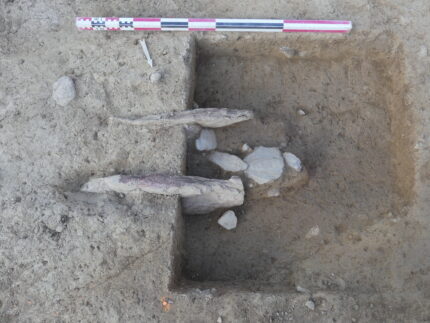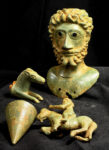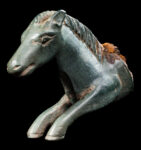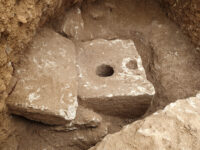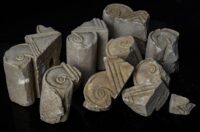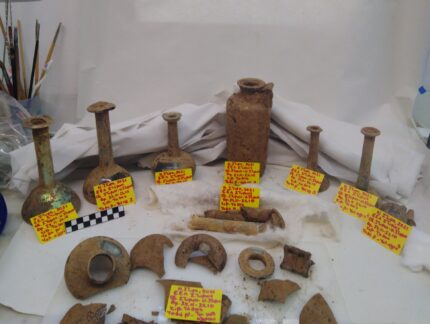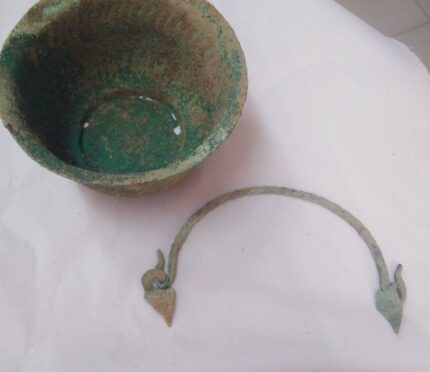 Armed with modern technology, archaeologists have returned to a Bronze Age tumulus in Brittany, northwestern France, that was already excavated once in the 19th century and was largely destroyed by occupying German forces during World War II.
Armed with modern technology, archaeologists have returned to a Bronze Age tumulus in Brittany, northwestern France, that was already excavated once in the 19th century and was largely destroyed by occupying German forces during World War II.
The Cruguel tumulus is on a hill in the town of Guidel where the Laïta river flows into the Atlantic Ocean. When it was first explored by renown Breton archaeologist Louis Le Pontois in the 1880s, it was still 85 feet in diameter and 18 feet high. It was topped with menhirs capped by a large block of granite. The central tomb was excavated and three bronze daggers and 14 flint arrowheads were recovered from the grave. The German occupiers destroyed it, leveling the mound and building on top of it.
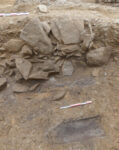 This year, archaeologists returned to the tumulus in the hope that modern technology and archaeological practices might bring to light previously undiscovered information about the mound, maybe even unrecorded menhirs on its periphery. Those latter hopes proved vain, but the team did unearth vertical stone slabs that originally formed the perimeter of the mound. They also discovered two pits containing sherds of pottery decorated with incised lines and a funerary stone coffer from the period the tumulus was constructed.
This year, archaeologists returned to the tumulus in the hope that modern technology and archaeological practices might bring to light previously undiscovered information about the mound, maybe even unrecorded menhirs on its periphery. Those latter hopes proved vain, but the team did unearth vertical stone slabs that originally formed the perimeter of the mound. They also discovered two pits containing sherds of pottery decorated with incised lines and a funerary stone coffer from the period the tumulus was constructed.
The excavation also provided a better understanding of the architecture of the funerary monument, made up of successive contributions of soil between which layers of clay are inserted, intended to stabilize and solidify the elevation. These clays were taken nearby, as evidenced by the large extraction pits discovered about twenty meters to the east of the monument. A small stone structure, the function of which has not yet been determined, has also been unearthed at the base of the tumulus.
The archaeologists especially had the good surprise to rediscover the central tomb, fortunately preserved under the German remains. Quadrangular in shape, it measured 4 m long by 2.50 m wide and was hollowed out to nearly 1 m deep. The excavation has shown that the arrangement of blocks that constituted the top had been largely disrupted by the exploration of the XIXth century and the collapse that followed. A perforated block and a cup block (round shapes pitted in the stone) were nevertheless extracted from the filling: their function, perhaps symbolic or aesthetic, still raises questions.
The rest of the study will enrich our knowledge of the first societies of the Bronze Age, where tombs dedicated to a single deceased supplant collective tombs and betray a growing hierarchy.
